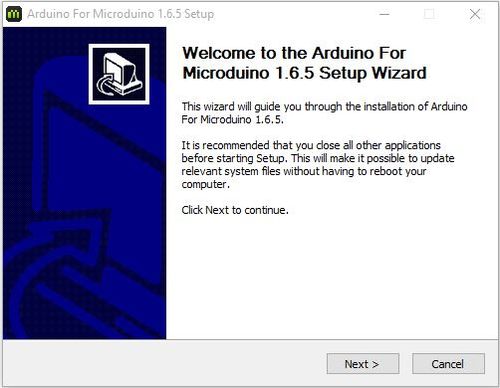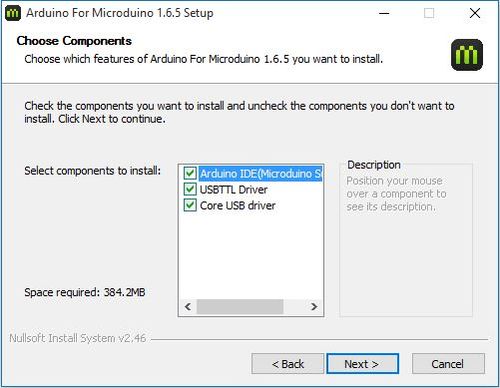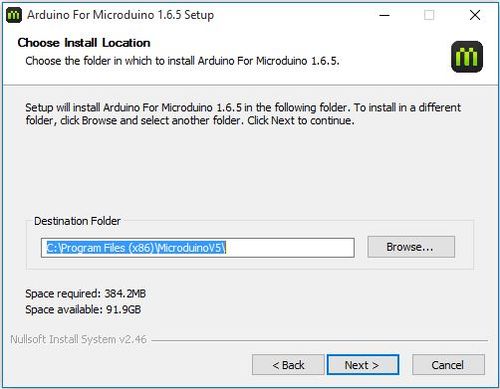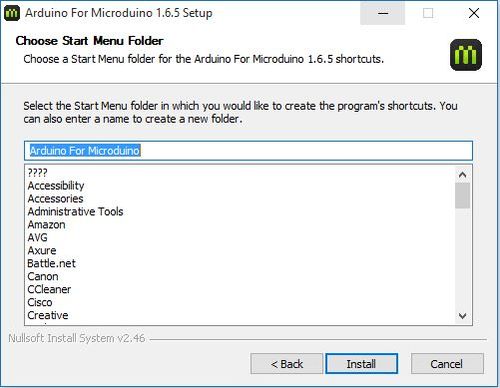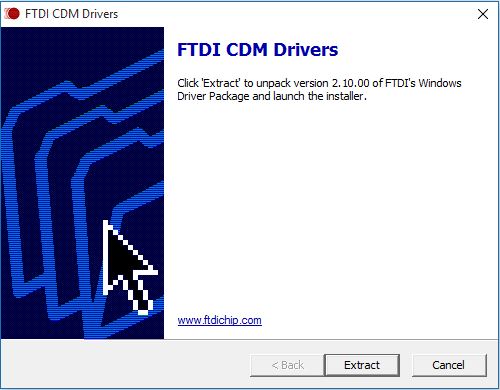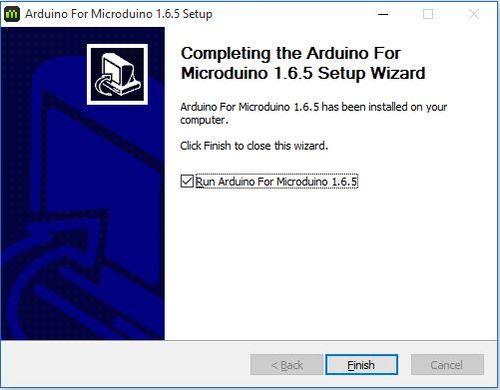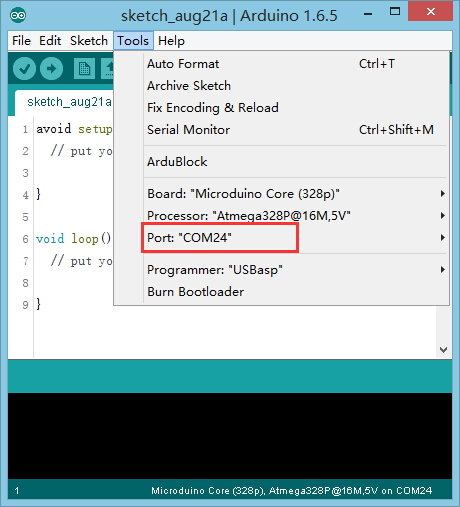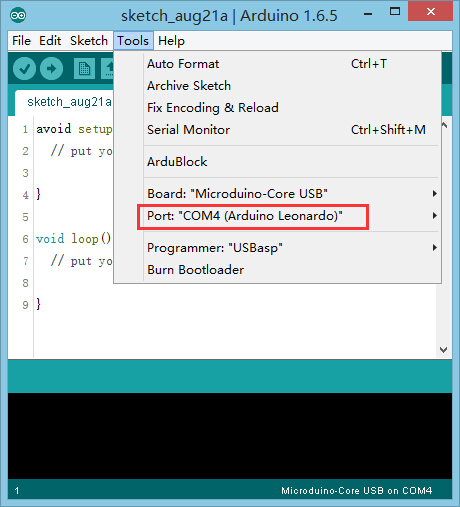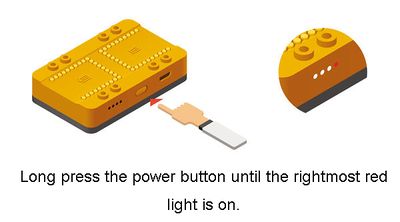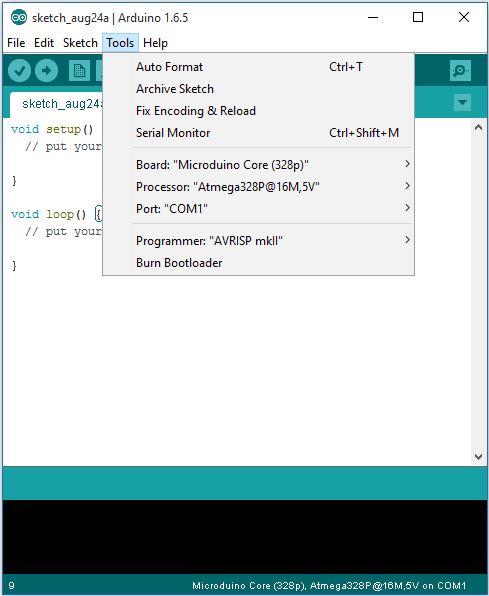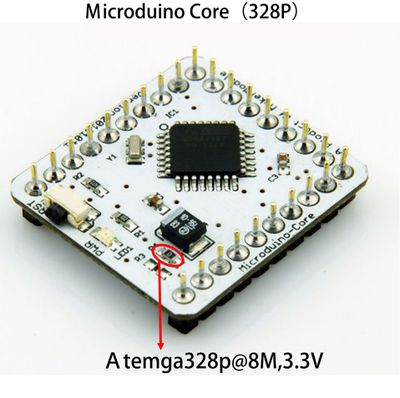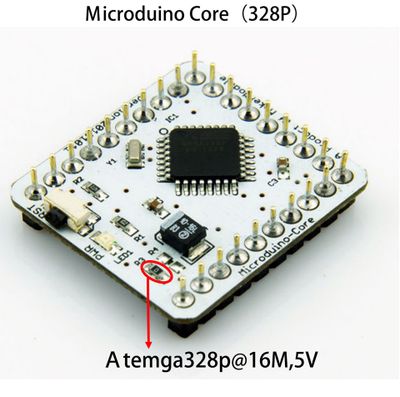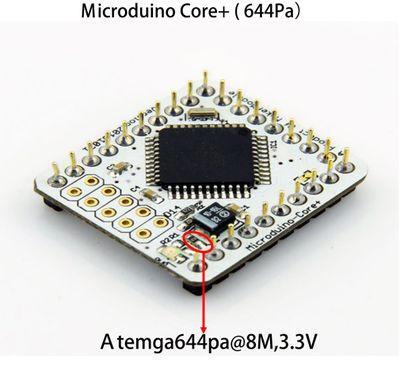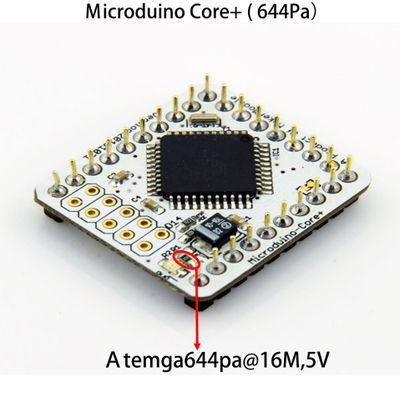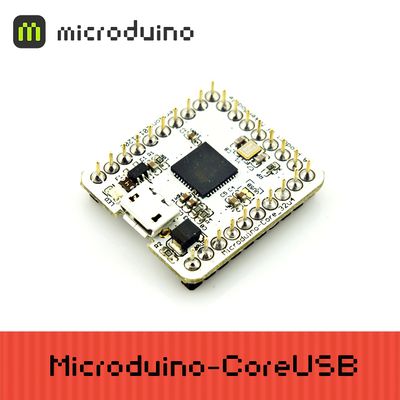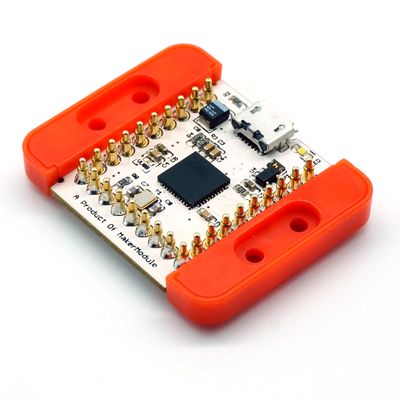Difference between revisions of "Getting started: Microduino IDE for Windows"
From Microduino Wiki
(→Confirm Drivers Installed Successfully) |
(→Selecting Board Type, Processor, and Serial Port) |
||
| Line 38: | Line 38: | ||
=Selecting Board Type, Processor, and Serial Port= | =Selecting Board Type, Processor, and Serial Port= | ||
| + | {| class="wikitable" | ||
| + | |- | ||
| + | ! Name | ||
| + | ! Board | ||
| + | ! Processor | ||
| + | ! Contained in Kit | ||
| + | |- | ||
| + | | Core (168pa) | ||
| + | | Microduino/mCookie-Core (168pa) | ||
| + | |- | ||
| + | | Core (328p) | ||
| + | | Microduino/mCookie-Core (328p) | ||
| + | |- | ||
| + | | Core+ (644pa) | ||
| + | | Microduino/mCookie-Core+ (644pa) | ||
| + | |- | ||
| + | | Core+ (1284pa) | ||
| + | | Microduino/mCookie-Core+ (1284pa) | ||
| + | |- | ||
| + | | CoreUSB | ||
| + | | Microduino/mCookie-Core USB (32u4) | ||
| + | |- | ||
| + | | CoreRF | ||
| + | | Microduino/mCookie RF (128rfa1) | ||
| + | |} | ||
=Arduino IDE Basics= | =Arduino IDE Basics= | ||
Revision as of 22:35, 21 March 2017
| Language: | English • 中文 |
|---|
ContentsDownload
https://www.microduino.cc/download Installation
Confirm Drivers Installed SuccessfullyUSBTTL
CoreUSB
mBattery
IMPORTANT: Ensure that mBattery is "ON" by pressing and holding the button. A red LED should be on, which indicates that power is being supplied to the modules.
Selecting Board Type, Processor, and Serial Port
Arduino IDE BasicsInterface
Tools
The Board Types
Uploading Code
|
